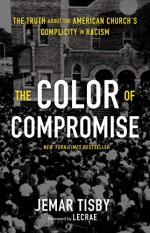
|
| Name: _________________________ | Period: ___________________ |
This quiz consists of 5 multiple choice and 5 short answer questions through Chapter 5-6.
Multiple Choice Questions
1. How did enslaved Blacks share messages about possible escape plans?
(a) In newspapers.
(b) In telegrams.
(c) In letters.
(d) In songs.
2. What was the impact of the Kansas-Nebraska Act of 1854?
(a) It overturned the Fugitive Slave Clause.
(b) It nullified the Missouri Compromise.
(c) It provided a legal argument against emancipation.
(d) It tipped the balance of power in favor of slave states.
3. How many people perished during the Middle Passage?
(a) About 2 million.
(b) About 1 million.
(c) About 500,000.
(d) About 750,000.
4. In Chapter 1, Beverly Daniel Tatum defines racism as a combination of "prejudice" and another factor. What is the second factor?
(a) Ethnicity.
(b) Bigotry.
(c) Power.
(d) Planning.
5. According to James Henley Thornwell, "The church can merely assert what the bible teaches, and must remain silent on that which the bible is silent" (85). What is the name of this doctrine?
(a) The infallibility of the church.
(b) The of impartiality the church.
(c) The serendipity of the church.
(d) The spirituality of the church.
Short Answer Questions
1. What was the impact of chattel slavery on Black families?
2. What was the impact of the Dred Scott Decision?
3. What was the outcome of the Methodist General Conference of 1808?
4. How many people died in the Civil War?
5. Why did lynch mobs in Jim Crow regions often target Black preachers?
|
This section contains 338 words (approx. 2 pages at 300 words per page) |

|




